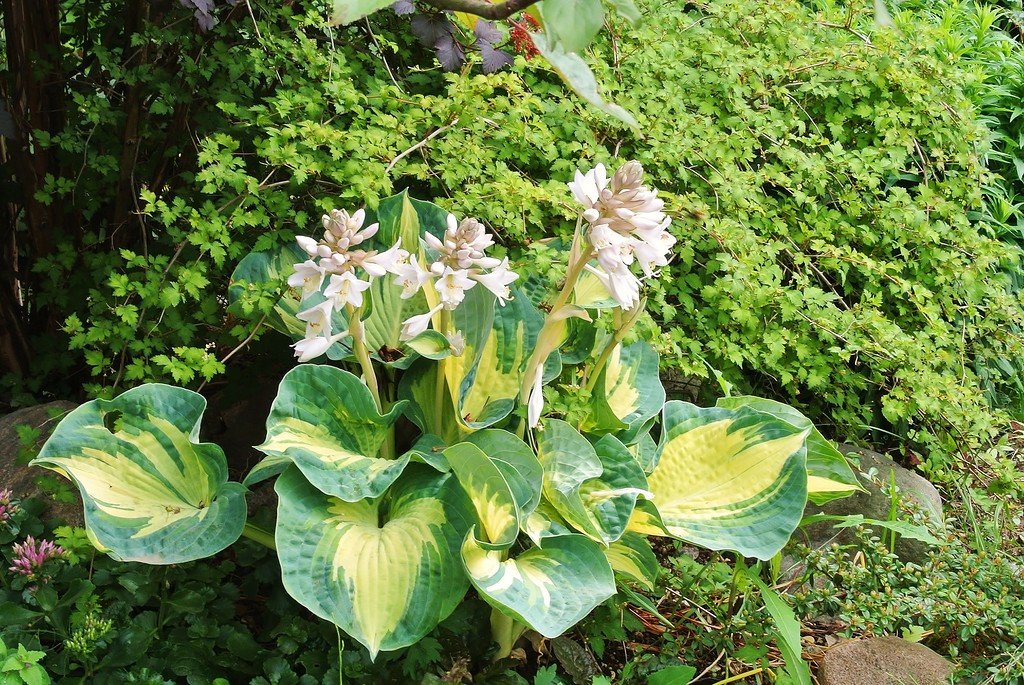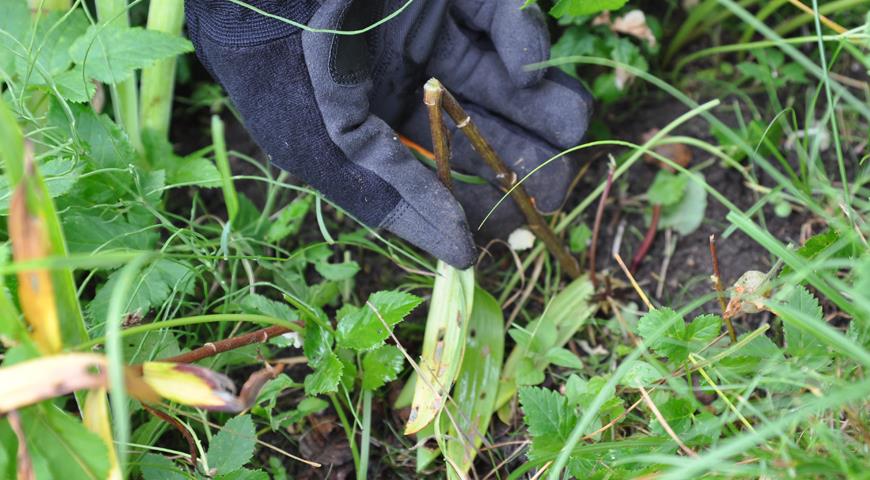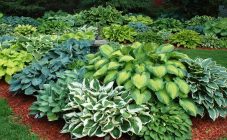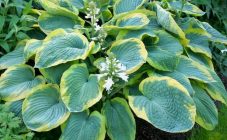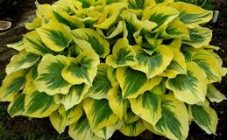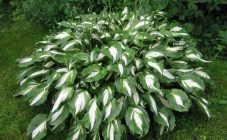Post-flowering care rules
Hosta is often grown by gardeners because it significantly improves the appearance of the garden, while not requiring a lot of time and effort to maintain. The plant blooms rather late - in the second or third decade of August. After the buds have faded, proper care must be taken. Often, summer residents have a question whether the hosts need to cut the flower stalks. Professionals say this is a necessary step. Without pruning, the hosta begins to lose nutrients necessary for seed ripening.
The next important step in post-flowering care is mulching. The withering green mass of the plant itself is the base layer. For additional insulation and fertilization, organic mulch is introduced, for example, peat, sawdust and cut grass.
When the hosta has faded, what to do next is definitely not necessary, it is to feed. The deadline for fertilization is August 20-25. Later fertilizing does not allow the plant to enter the resting phase and prepare for wintering.
Hosta, which is not difficult to leave after flowering, needs transplantation or division. The bush is removed from the ground along with a lump, and then either transferred to a new place, or divided into several parts and planted. Each piece should have 2 sockets and good roots. This procedure must be done in September so that the plant has time to take root in a new place and prepare for winter frosts. The planting of the bushes should be done at a distance of at least 30 cm from each other. This gap is optimal, since most hosta varieties grow very strongly during one season. If it is not possible to plant a bush annually, then this will not affect its decorative effect in any way. In one place, the host can actively develop up to 20 years, subject to the rules of care.
What to do with a peduncle
When the hosta remained at the end of the season at the end of the season after flowering, what to do with the flower stalk containing the seeds? It should be removed before winter comes. Theoretically, this procedure can be performed in the spring, but then the probability of kidney damage increases many times over. If you remove a wilted flower in the fall, then this problem will not arise. In addition, the plant will not waste precious energy for seed ripening.
Landscape designers also support pruning of peduncles. Hosta, first of all, attracts with its lush green mass. To maximize it, the bush must give all its strength to this process. Therefore, when asked whether it is necessary to cut flowers from the hosts, professionals always answer positively. Pruning allows you to channel energy into the development of the hardwood part.
Pruning rules
The best time to prune the hosta is right after the flower stalk has faded.If you do not delay with the moment when to cut off the flower stalks from the hosta, then the bush will always grow thick and powerful, without bald spots and crumbling foliage. There are no special rules for pruning. It is necessary to take a secateurs, it is advisable to pre-disinfect it. With a confident movement, you need to cut the stem on which the peduncle is located, at a distance of 10 cm above the ground. Leaves nearby must be carefully held with your hand so as not to accidentally touch them. During trimming, it is also necessary to control which parts are removed. If the procedure is not carried out carefully, there is a risk of damage to the growth buds, from which leaves will develop in the next season. As a rule, in young plants, the stems are less rigid, so they are allowed to be cut off.
The main recommendation when pruning is not to touch the leaves. The yellowed foliage should be left as a hiding place for the winter. In the spring, with the appearance of the first shoots, last year's leaves can be removed.
Gardeners' opinions
There is a lot of controversy among experienced flower growers and summer residents about whether it is necessary to cut flowers from hosts. Some believe that it is impossible to grow a beautiful plant without this procedure. Creeping flower arrows make the bush scattered. The decorativeness of such a shrub is reduced many times. In addition, flowers left on a young bush do not allow it to develop, from this host it may look scanty.
Another group believes that blooming is a natural process that cannot be interfered with. Adherents of this opinion are lovers of flowering plants. They are connoisseurs of the hosta flower itself and the subtle scent it exudes. In addition, opponents of pruning argue that this procedure causes a lot of stress in the plant and reduces it.
To make the final decision on whether to prune the host for the winter, it is recommended to evaluate the shrub. If the deciduous mass predominates, and there are few peduncles, then the flower stems can be removed without a doubt. If the number of flower and deciduous stems is approximately the same, then you should not cut off all the wilted peduncles. This can weaken the plant. In this situation, you can selectively prune and remove the thickest stems.
In general, the hosta is a very unpretentious and grateful plant. She always responds with rich growth to any care procedures. In addition, the decorativeness of the bush largely depends on the variety. For more deciduous varieties, the procedure for removing peduncles is relevant. With its help, you can grow a shrub up to 1.5 m in diameter. The flowering host does not need much pruning.

